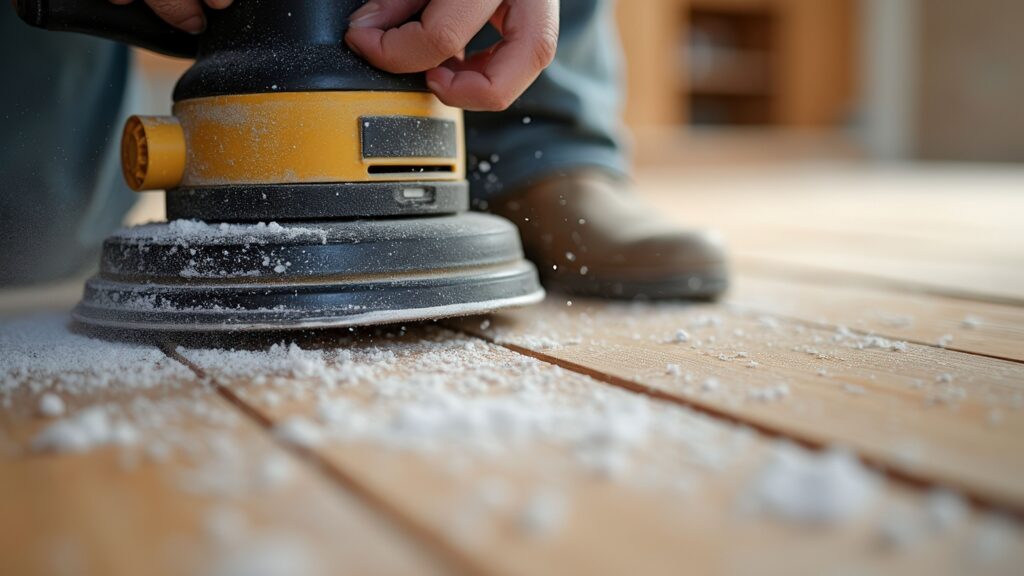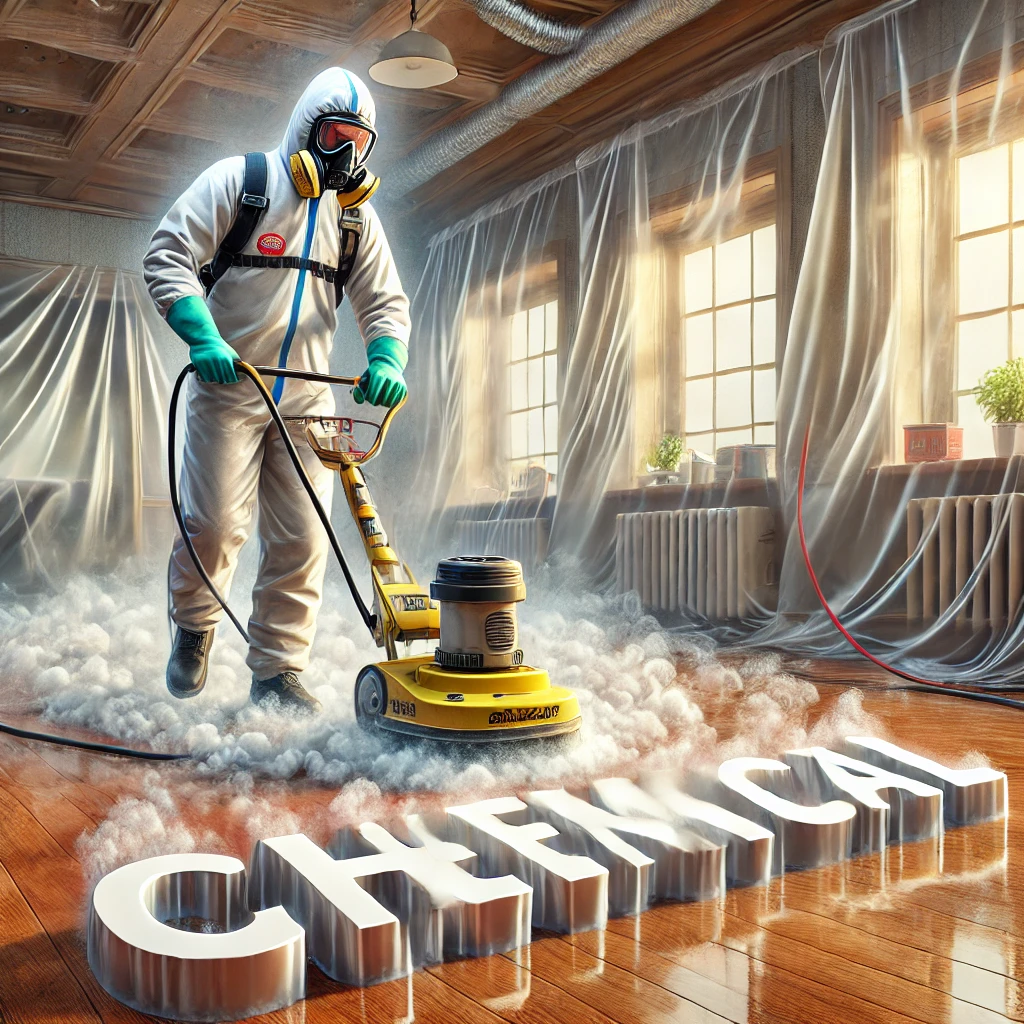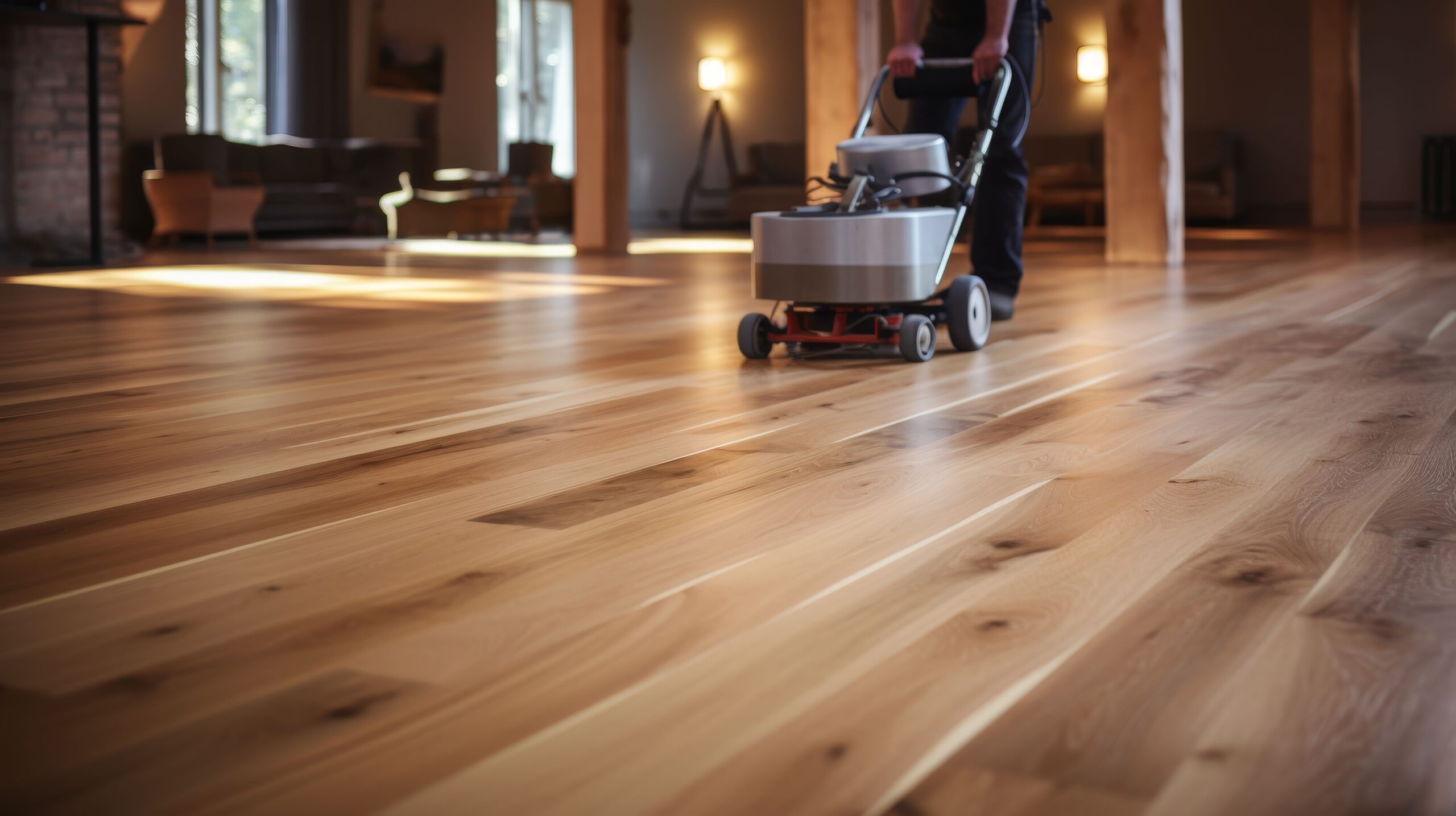Refinishing Your Floors: A Hidden Health Hazard
Refinishing hardwood floors can dramatically improve the look and value of your home. However, many homeowners overlook the potential health hazards posed by the process. Toxic chemicals and fine dust released during floor refinishing can linger in your home for weeks, causing serious health concerns.
Even with careful application, refinishing can double the chemical levels in your home. Children, pregnant women, and the elderly are especially vulnerable to these airborne toxins. Fortunately, you can mitigate these risks with proper precautions and advanced air quality testing from IndoorDoctor, including specialized testing techniques like thermal desorption and mass spectrometry analysis.
Why Floor Refinishing Poses Health Risks

1. Toxic Chemicals in Floor Finishes
Floor finishes, sealers, and stains commonly contain volatile organic compounds (VOCs) such as formaldehyde, toluene, and xylene. These VOCs can:
- Cause immediate symptoms such as headaches, dizziness, and throat irritation.
- Trigger long-term health effects, including respiratory conditions, asthma exacerbation, and even cancer.
- Persist in the air for weeks or months without proper mitigation.
2. Fine Particulate Matter from Sanding
Sanding floors generates fine dust particles that can remain airborne for days. These tiny particles can deeply penetrate the lungs and cause:
- Respiratory irritation.
- Worsened asthma symptoms.
- Long-term lung damage after repeated exposure.
3. Heightened Risk for Vulnerable Populations
Children, whose lungs are still developing, are particularly susceptible to the harmful effects of VOCs and dust. Pregnant women and the elderly are also at an elevated risk of experiencing adverse health effects from prolonged exposure.
Advanced Indoor Air Quality Testing with IndoorDoctor
IndoorDoctor takes air quality testing to the next level with the ability to identify specific chemicals and their sources through advanced techniques such as thermal desorption with mass spectrometry analysis.
How Advanced Indoor Air Quality Testing Works:
- Collection of Air Samples: Using thermo sorbent tubes, we collect air samples from your home, capturing a range of VOCs and airborne contaminants.
- Laboratory Analysis: The samples are processed using gas chromatography-mass spectrometry (GC-MS). This highly precise technique identifies the exact chemical composition of your indoor air.
- Source Identification: The results allow us to pinpoint the sources of harmful VOCs, whether they stem from floor finishes, cleaning products, or other materials.
This detailed analysis empowers you to take targeted actions to eliminate or reduce chemical hazards in your home.
Control Measures for Safer Floor Refinishing
If you’re refinishing your floors, follow these precautions to minimize health risks:
1. Choose the Right Contractor
- Communicate your concerns about dust and toxic finishes in writing.
- Opt for contractors who use low-VOC finishes and advanced dust control methods like dustless sanding systems.
2. Protect Your HVAC System
- Seal off all air vents and ducts to prevent dust and fumes from spreading.
- Schedule professional duct cleaning after the project to eliminate residual contaminants.
3. Containment and Ventilation
- Use plastic sheeting with zipper-style openings to isolate the work area.
- Equip the work zone with negative air machines and commercial-grade air scrubbers.
- Ensure proper ventilation by opening windows and using fans to promote airflow.
4. Test Air Quality Before and After Refinishing
- Conduct pre-refinishing air quality testing to establish a baseline.
- Test again after refinishing to ensure your home is safe for reoccupation. IndoorDoctor’s mass spectrometry analysis provides a detailed breakdown of VOCs and their sources.
5. Invest in Air Purifiers
- Install carbon-based air purifiers, such as those from Austin Air or IQAir, to reduce airborne toxins and particulates.
Health Symptoms to Watch For
If you experience any of the following symptoms after floor refinishing, it may indicate unsafe air quality:
- Headaches or brain fog.
- Fatigue or lethargy.
- Wheezing or difficulty breathing.
- Eye, nose, or throat irritation.
Vacate your home immediately if symptoms persist and schedule air quality testing with IndoorDoctor to identify and address the source of the problem.
Types of Floor Finishes and Their Risks

1. Water-Based Urethanes
- Low odor and fewer VOCs.
- Quick drying time allows for multiple coats in one day.
- A safer choice for indoor air quality, though it may not enhance floor color as much.
2. Oil-Based Polyurethanes
- Durable and enhances the natural color of the wood.
- High VOC content and strong odors make it hazardous without proper precautions.
3. Natural Oils and Waxes
- Contain fewer harmful chemicals and VOCs.
- May require more frequent maintenance but are safer for sensitive individuals.
IndoorDoctor’s Air Quality Testing: The Key to a Safer Home
Why You Need Air Quality Testing:
- Before Refinishing: Establish a baseline for VOC levels and particulates in your home.
- After Refinishing: Ensure that chemical levels have returned to safe thresholds before reoccupying your home.
Our Advanced Testing Services Include:
- Thermal Desorption Tubes: Capture air samples for precise chemical analysis.
- Mass Spectrometry (GC-MS): Identify the exact chemical composition of your indoor air.
- Real-Time Particulate Monitoring: Assess lung-damaging dust levels on-site.
- Customized Recommendations: Receive actionable advice to improve your indoor air quality.
Best Practices for a Safe Refinishing Process
1. Plan to Vacate Your Home
- Schedule the refinishing project during a time when you can leave the home for several days to allow VOCs to off-gas.
2. Insist on Low-VOC Products
- Opt for water-based finishes or natural alternatives to reduce chemical exposure.
3. Monitor Air Quality Continuously
- Use air quality monitors to track VOC and dust levels before, during, and after the project.
4. Deep Clean Your Home Afterward
- Thoroughly clean all surfaces to remove any settled dust.
Protect Your Health with IndoorDoctor
Refinishing your floors should not come at the expense of your family’s health. With IndoorDoctor, you can ensure a safe and healthy home environment before, during, and after your refinishing project.
Why Choose IndoorDoctor?
- We provide cutting-edge air quality testing, including mass spectrometry analysis to identify harmful chemicals.
- Our detailed reports empower you to make informed decisions about your indoor air.
- We offer practical solutions to improve your home’s air quality and safeguard your loved ones.
Take Action Today
- Schedule a consultation: Visit IndoorDoctor.com to book your air quality test.
- Call us now: 800-466-1522
Don’t risk your health or the health of your family. Let IndoorDoctor ensure your home is safe, healthy, and free from harmful contaminants.
Final Thoughts
Floor refinishing is a worthwhile home improvement project, but it comes with hidden dangers. By taking proactive measures and leveraging IndoorDoctor’s advanced air quality testing services, you can enjoy the beauty of refinished floors without compromising your well-being.
Breathe easier—choose IndoorDoctor for peace of mind and a healthier home.




